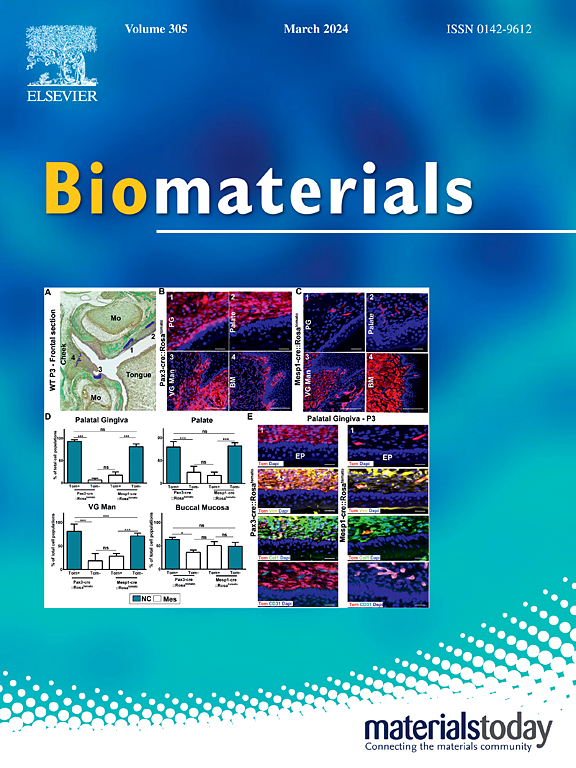Recent advances in smart hydrogels derived from polysaccharides and their applications for wound dressing and healing
IF 12.8
1区 医学
Q1 ENGINEERING, BIOMEDICAL
引用次数: 0
Abstract
Owing to their inherent biocompatibility and biodegradability, hydrogels derived from polysaccharides have emerged as promising candidates for wound management. However, the complex nature of wound healing often requires the development of smart hydrogels---intelligent materials capable of responding dynamically to specific physical or chemical stimuli. Over the past decade, an increasing number of stimuli-responsive polysaccharide-based hydrogels have been developed to treat various types of wounds. While a range of hydrogel types and their versatile functions for wound management have been discussed in the literature, there is still a need for a review of the crosslinking strategies used to create smart hydrogels from polysaccharides. This review provides a comprehensive overview of how stimuli-responsive hydrogels can be designed and made using five key polysaccharides: chitosan, hyaluronic acid, alginate, dextran, and cellulose. Various methods, such as chemical crosslinking, dynamic crosslinking, and physical crosslinking, which are used to form networks within these hydrogels, ultimately determine their ability to respond to stimuli, have been explored. This article further looks at different polysaccharide-based hydrogel wound dressings that can respond to factors such as reactive oxygen species, temperature, pH, glucose, light, and ultrasound in the wound environment and discusses how these responses can enhance wound healing. Finally, this review provides insights into how stimuli-responsive polysaccharide-based hydrogels can be developed further as advanced wound dressings in the future.

求助全文
约1分钟内获得全文
求助全文
来源期刊

Biomaterials
工程技术-材料科学:生物材料
CiteScore
26.00
自引率
2.90%
发文量
565
审稿时长
46 days
期刊介绍:
Biomaterials is an international journal covering the science and clinical application of biomaterials. A biomaterial is now defined as a substance that has been engineered to take a form which, alone or as part of a complex system, is used to direct, by control of interactions with components of living systems, the course of any therapeutic or diagnostic procedure. It is the aim of the journal to provide a peer-reviewed forum for the publication of original papers and authoritative review and opinion papers dealing with the most important issues facing the use of biomaterials in clinical practice. The scope of the journal covers the wide range of physical, biological and chemical sciences that underpin the design of biomaterials and the clinical disciplines in which they are used. These sciences include polymer synthesis and characterization, drug and gene vector design, the biology of the host response, immunology and toxicology and self assembly at the nanoscale. Clinical applications include the therapies of medical technology and regenerative medicine in all clinical disciplines, and diagnostic systems that reply on innovative contrast and sensing agents. The journal is relevant to areas such as cancer diagnosis and therapy, implantable devices, drug delivery systems, gene vectors, bionanotechnology and tissue engineering.
 求助内容:
求助内容: 应助结果提醒方式:
应助结果提醒方式:


